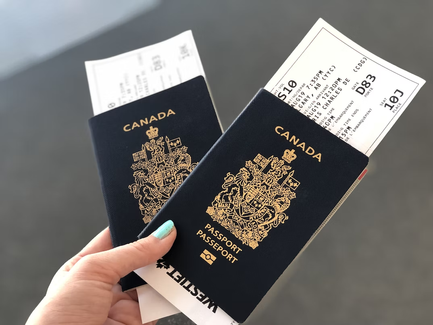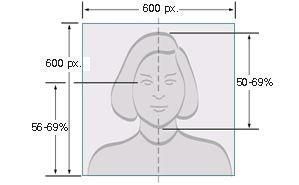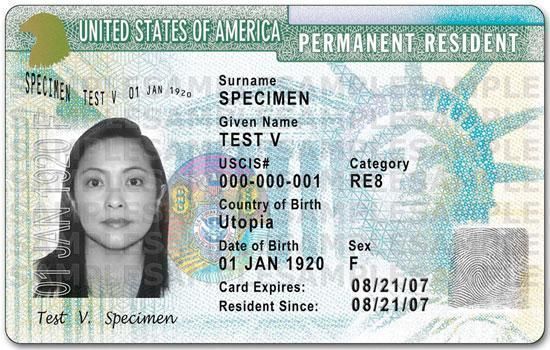
Apply to a foreign university with confidence
- Properly fulfilled documents
- Perfect motivation letter
- Support from a personal mentor
- Offers from several universities
Article score: 4.33 out of 5 (3 reviews)
US immigration process is quite difficult and expensive. What are the options of immigration in the USA and which path to choose? Read in the article.
Free consultation
The USA was founded by immigrants from European countries. For two hundred years, Americans brought here millions of African people as slaves, and in the 20th century, people immigrated here, fleeing world wars. Not surprisingly, US residents often call themselves the "nation of immigrants".
Although the land has long been inhabited, slavery abolished, and a new world-scale conflict did not happen, only in 2018 more than 533 thousand people received immigrant status in the United States[8]. People come here primarily for prosperity: the United States takes 6th place among the best countries for immigration[9].
Whether immigrants are welcome here or not is a controversial question. On the one hand, the US has no need to encourage immigration: they are already one of the world leaders in terms of the number of immigrants[10], 10 million of which are in the country illegally[11]. On the other hand, the USA has a simplified immigration regime for prominent figures in culture, science, sports, and business. Talented students can receive financial support for studying at the best universities in the country and the world, such as Harvard, MIT, Caltech. There is also a liberal family immigration policy in the United States: children, parents and even brothers and sisters of a US citizen can receive a green card. Same-sex marriages are also legalized in the country.
Immigration to the US is a costly process. And it is neither the high cost of plane tickets to fly to the other hemisphere nor the cost of education and life: already at the stage of applying for an immigrant visa, you will have to pay for almost every bureaucratic procedure that accompanies interactions with American departments. On the other hand, the United States does not have an official language requirement, so the only category that should confirm English proficiency for immigration is students. In addition, in the USA there is a unique free lottery that awards a green card (American residence permit).
| Immigration | Exam | Visa | Cost | Consideration | Green card |
|---|---|---|---|---|---|
| Student | Yes | Nonimmigrant | 60 USD | 3+ months | No |
| Lottery green card | No | Immigrant | 330 USD | 1+ years | Yes |
| Labor | No | Immigrant | 345 USD | Individually | Yes |
| Marriage | No | Nonimmigrant | 160 USD | Individually | Yes |
| Family Reunion | No | Immigrant | 345 USD | Individually | Yes |
| Humanitarian | No | - | Free | Individually | Yes |
You can apply for a US visa in a US Embassy in your home country. The complete list of embassies can be seen here.
The collection of documents for a visa is a crucial stage that decides whether the candidate will be given permission to enter the country. While for each type of immigration and for each individual situation the set of documents is always unique, there are several general requirements for visa documents.
When applying for a visa, you must provide photographs that meet strict special requirements. Requirements may change — before making a photograph, it is necessary to check the current information.


Candidates for immigrant visas are required to have a number of necessary vaccinations. Vaccination should be done as early as possible, as the process may take an indefinite amount of time depending on the individual situation and personal vaccination calendar. A statement of previous preventive vaccinations, certified by a doctor, and with the seal of a medical institution, must be brought for a medical examination.
To immigrate to the USA, one option is to study with a student visa (F or M) and after graduation, find a job and stay there to live. Although higher education in the United States is expensive, they welcome the immigration of talented students and offer them scholarships at the best universities in the country and the all over world. As a result, many international students study at top-rated universities. For example, one in four students at the California Institute of Technology is a foreigner.
You can get a visa to the United States without applying for a scholarship, but in this case, you will need to prove that you have enough money for travel, accommodation and expensive training.
Preparation for immigration should begin at least a year prior in order to pass the language and entrance exams and receive confirmation of admission. It is recommended that you apply for a visa no later than 3 months before your intended departure.
Foreign students in the USA can work part-time on campus for no more than 20 hours a week. The source of additional income will make life easier, but will not be sufficient to cover living expenses and tuition. Students with an F-1 visa can also take a paid internship (up to 1 year) in the field of their educational program.
Main article Education in the USA
Read more about enrolling in US universities.
There are two main types of student visas, designed for a long-term student stay in the USA:
| Item | Cost |
|---|---|
| Translation, notarization | 10 USD/document |
| Consular fee | 160 USD |
| SEVIS I-901 fee | 200 USD |
Read more about the visa denials.
This is the easiest way to immigrate, which does not require huge sums of money in your accounts, education or professional experience. It will be possible to obtain citizenship after three years of living in the United States in marriage (for other categories — 5 years). For marriage immigration, you need to get a special visa for the Fiancé(e) — K. This visa is needed to enter the country and marry a citizen or resident of the country. After that, you can apply for a green card as the spouse of a US citizen or resident. Same-sex marriage is also legal.
| Item | Cost |
|---|---|
| Translation, notarization | 10 USD |
| Petition I-129F | 535 USD |
| Consular fee | 265 USD |
| Medical examination | 246 USD |
| Petition I-130 | 535 USD |
| Petition I-485 | 1,225 USD |
Migration Service checks the conscientiousness of the spouses even after the marriage. For example, when an immigrant decides to change his status from conditional permanent to permanent. The punishment for fraud is strict:
The fiancé(e) must prepare paperwork, copies of which the partner must attach to the application.
An immigrant visa is issued to several categories of immigrants in the United States: workers, investors, family immigrants and the winners of the green card lottery. For this reason, both the main body of paperwork and additional documents are practically the same not depending on the purpose of the move for these categories.
A work visa to the USA is designed for five categories of candidates, which include remarkable people, professionals, contractors, entrepreneurs, investors, and others. A common feature of the US labor immigration process is that the prospective immigrant or his employer must first fill out an immigration petition to the US Citizenship and Immigration Services (USCIS). An application for an immigrant visa will be possible only after the approval of the petition and reception of the invitation. A work visa to the USA is an immigration visa — not only it will open the entrance to the country but it will also give the right to receive a green card after entry.
The USA is the state with the highest GDP in the world[22]. It requires labor immigration due to the needs of the constantly growing economy. Simultaneously, they strive to bring together prominent figures of science, business and other fields from around the world, and therefore offer them streamlined immigration conditions, and professionals of various qualifications who will fill vacant jobs. For the same reason, the United States also offers immigration options for businessmen / investors — the state expects them to invest in the economy, which will create new jobs.
Preferred Categories | For whom | Petition | Filling out a petition |
|---|---|---|---|
| 1 |
| I-140 | Yourself / Employer |
| 2 |
| I-140 | Yourself / Employer |
| 3 |
| I-140 | Employer |
| 4 |
| I-140 | Employer |
| 5 |
| I-526 | Yourself |
Immigration for certain categories requires a job offer from a US employer who, in this case, acts as a sponsor of an immigrant. In this role, he sends the immigration Petition I-140 to the US Citizenship and Immigration Services (USCIS). Its registration and approval gives the candidate a green light for applying for a visa. The most prominent figures in various fields can file a petition themselves. The spouse of the candidate and his children under the age of 21 can also obtain immigrant visas on the basis of an approved petition.
| Item | Cost |
|---|---|
| Translation, notarization | 10 USD |
| Medical examination | 246 USD |
| Petition I-140 | 700 USD |
| Petition I-130 | 535 USD |
| Petition I-526 | 3,675 USD |
| Application DS-260 | 345 USD |
| Application DS-260 (family member) | 325 USD |
| Immigration fee | 220 USD |
Information about fees is updated on the websites of the Ministry of Foreign Affairs and the US Citizenship and Immigration Services.
Read more about immigration for investors on the website of the US State Department.
Businessmen and investors can immigrate to the USA if they invest in the American economy. At the same time, these investments should create from 10 jobs (full time) for citizens, US residents or immigrants with the right to work, not counting the spouse and children of the investor. Minimum investment amount:
An investor visa is a work visa, so the application process is the same as for other work visas.
A detailed description of the requirements for investors is on the website of the Citizenship and Immigration Services.
An investor must file a I-526 petition by themselves to the US Citizenship and Immigration Services (USCIS). Its registration and approval give the candidate a green light for applying for an immigrant visa. Documents confirming investment activity must be attached to the petition — their description is on the USCIS Service website. The spouse of the candidate and his children under the age of 21 can also obtain immigrant visas on the basis of an approved petition.
Family immigration policy in the United States is quite liberal — not only close relatives (spouse, children) but also parents, brothers and sisters can immigrate to join a US citizen. The closest relatives of green card holders can also get the right to get an immigrant visa through the family line, which allows immigrants to invite their family to the United States. In either case, the immigrant or resident / citizen of the United States must file a petition with the Citizenship and Immigration Service for his loved one. You can apply for an immigrant visa only after its approval.
| Item | Cost |
|---|---|
| Translation, notarization | 10 USD |
| Medical Examination | 246 USD |
| I-130 Petition | 535 USD |
| DS-260 | 345 USD |
| DS-260 (family member) | 325 USD |
| Immigration Fee | 220 USD |
Petition I-130 is filled by the hosting citizen or a resident in the United States. It is the first step to applying for a family immigration visa. When the petition is approved and registered, the candidate will receive a notice from the US Citizenship and Immigration Services and will be able to apply for an immigrant visa. The spouse of the candidate and his children under the age of 21 can also obtain immigrant visas on the basis of an approved petition.

Each fall, the United States holds a Diversification Immigrant lottery, the winners of which can receive a permanent residence permit in the country — the green card. Every year 50 thousand people come to the United States to live with their families[23], with the help of this program. To participate, you must register online on the official website of the lottery. The winners apply for an immigrant visa with the same basic package of documents and in the same way as labor and family immigrants and receive a green card a few weeks after entering the United States.
People who have left their home country and cannot or do not want to return to it because of the fact or risk of persecution, can obtain asylum in the United States. In this case, the candidate must present evidence that will convince the United States to provide him protection.
Humanitarian immigrants in the United States fall into two categories: refugees and asylum seekers. A refugee is not originally in the United States: he receives a referral to the refugee program through the United Nations, non-governmental human rights organizations, or the US Embassy. If the US mission approves the candidate’s application, they help him move to the country, and the United States covers the immigration expenses. An asylum seeker arrives in the United States and applies for asylum on his own, awaiting a decision in the United States.
The status of refugee or asylum seeker gives the right to employment and social guarantees. Humanitarian immigrants take cultural integration courses and receive pocket money. Humanitarian immigrants receive a temporary visa, which can be replaced with a green card free of charge in a year.
People who are persecuted in their home country on the grounds of:
It is necessary to provide as much evidence of the persecution as possible:
It must be reported if the refugee was subjected to torture, serious bodily harm was inflicted, or there is a threat of his death penalty at home due to persecution on the basis of the indicated signs.
Citizenship gives an immigrant full political rights — for example, the right to elect and be elected. In addition, the holder of a US passport receives the right to a visa-free entry to almost any country in the world[2]. Citizenship can be obtained by the law of the soil, being born in the United States, even if the parents do not have American citizenship or a green card, or by naturalization, when the holder of the green card becomes a citizen[24].
Read more about obtaining citizenship on the US Citizenship and Immigration Services website.
60+ countries
we work with
$1,000,000 saved
by students through scholarships
6,400 offers
our students got